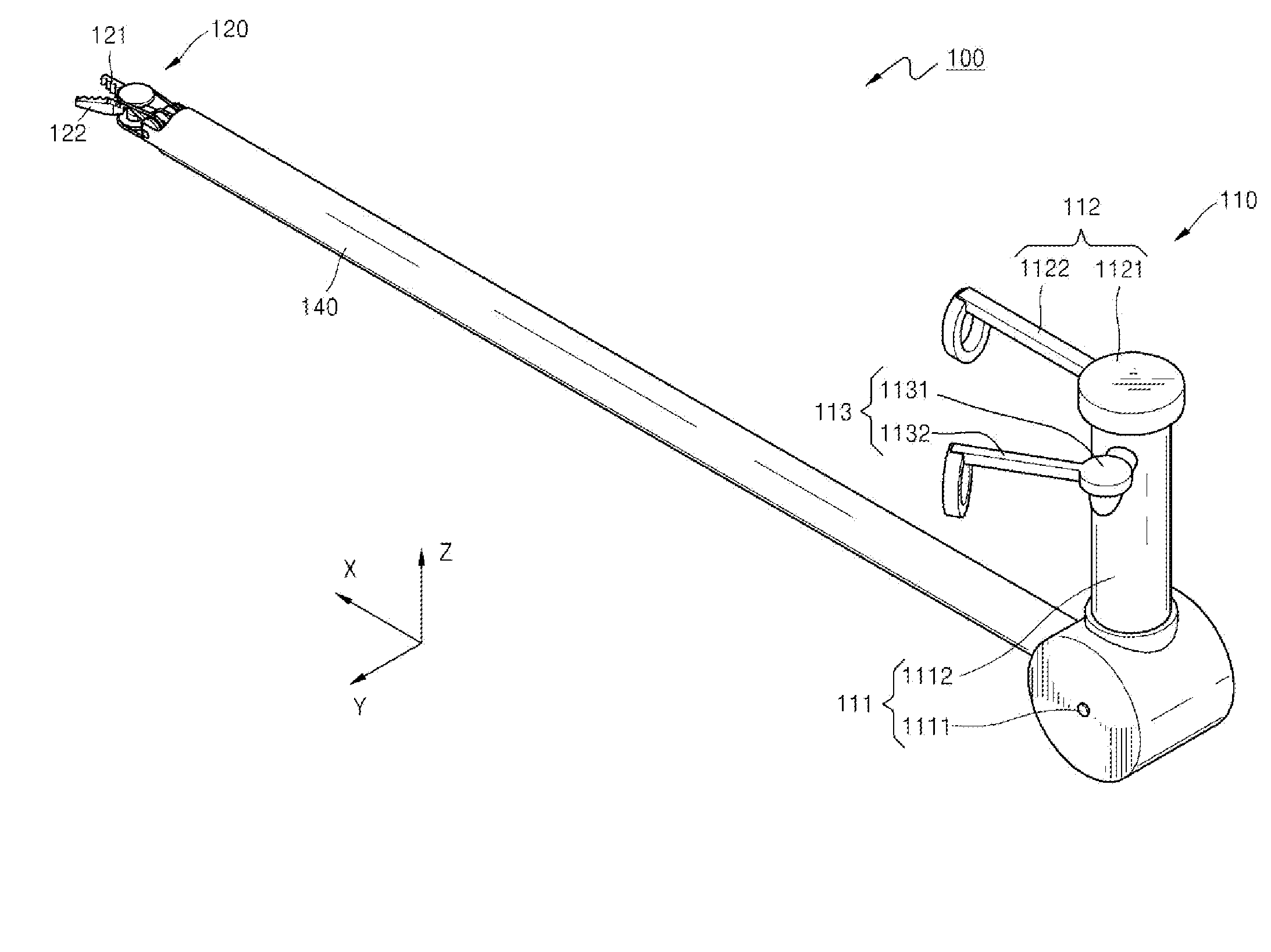Surgical instrument
a surgical and end tool technology, applied in the field of surgical instruments, can solve the problems of inconvenient operation inability to access the surgical region and perform various surgical operations, and inability to intuitively compare the operation of the operator's end tool to the actual bending operation, so as to improve the convenience of the surgical operator, improve the accuracy, and improve the quickness of the surgical operation.
- Summary
- Abstract
- Description
- Claims
- Application Information
AI Technical Summary
Benefits of technology
Problems solved by technology
Method used
Image
Examples
first embodiment
E3+H1+D3
[0064]FIG. 1 is a view illustrating a surgical instrument 100 according to a first embodiment of the present invention, and FIG. 2 is a detailed internal view of the surgical instrument 100 of FIG. 1.
[0065]Referring to FIGS. 1 and 2, the surgical instrument 100 according to a first embodiment of the present invention includes an operator 110, an end tool 120, an operating force transmitter 130, and a connector 140. Herein, the connector 140 may be formed to have a shape of a hollow shaft, so that one or more wires (which will be described later) may be accommodated therein. The operator 110 may be coupled to one end portion of the connector 140, and the end tool 120 may be coupled to the other end portion of the connector 140, so that the connector 140 may connect the operator 110 and the end tool 120.
[0066]In detail, the operator 110 is formed at one end portion of the connector 140 and is provided as an interface having, for example, a tweezers shape,...
second embodiment
E3+H2+D3
[0322]Hereinafter, a surgical instrument 200 according to a second embodiment of the present invention will be described. The surgical instrument 200 according to the second embodiment of the present invention is different from the surgical instrument 100 according to the first embodiment of the present invention in terms of the configuration of an operator. That is, in the surgical instrument 100 according to the first embodiment of the present invention, the yaw operator and the actuation operator are formed independently of each other and the rotation of the yaw operating axis and the rotation of the actuation operating axis are performed independently of each other, while in the surgical instrument 200 according to the second embodiment of the present invention, the actuation operator is formed on the yaw operator and the actuation operator rotates along with the yaw operator when the yaw operator rotates. This difference in the configuration of the...
third embodiment
E3+H3+D3
[0365]Hereinafter, a surgical instrument 300 according to a third embodiment of the present invention will be described. The surgical instrument 300 according to the third embodiment of the present invention is different from the surgical instrument 100 according to the first embodiment of the present invention in terms of the configuration of an operator. That is, the surgical instrument 100 according to the first embodiment of the present invention includes the yaw operator and the actuation operator are formed independently of each other such that the rotation of the yaw operating axis and the rotation of the actuation operating axis are performed independently of each other, while the surgical instrument 300 according to the third embodiment of the present invention includes a first jaw operator and a second jaw operator that operate a first jaw and a second jaw independently instead of the yaw operator and the actuation operator. This difference in...
PUM
 Login to View More
Login to View More Abstract
Description
Claims
Application Information
 Login to View More
Login to View More - R&D
- Intellectual Property
- Life Sciences
- Materials
- Tech Scout
- Unparalleled Data Quality
- Higher Quality Content
- 60% Fewer Hallucinations
Browse by: Latest US Patents, China's latest patents, Technical Efficacy Thesaurus, Application Domain, Technology Topic, Popular Technical Reports.
© 2025 PatSnap. All rights reserved.Legal|Privacy policy|Modern Slavery Act Transparency Statement|Sitemap|About US| Contact US: help@patsnap.com



